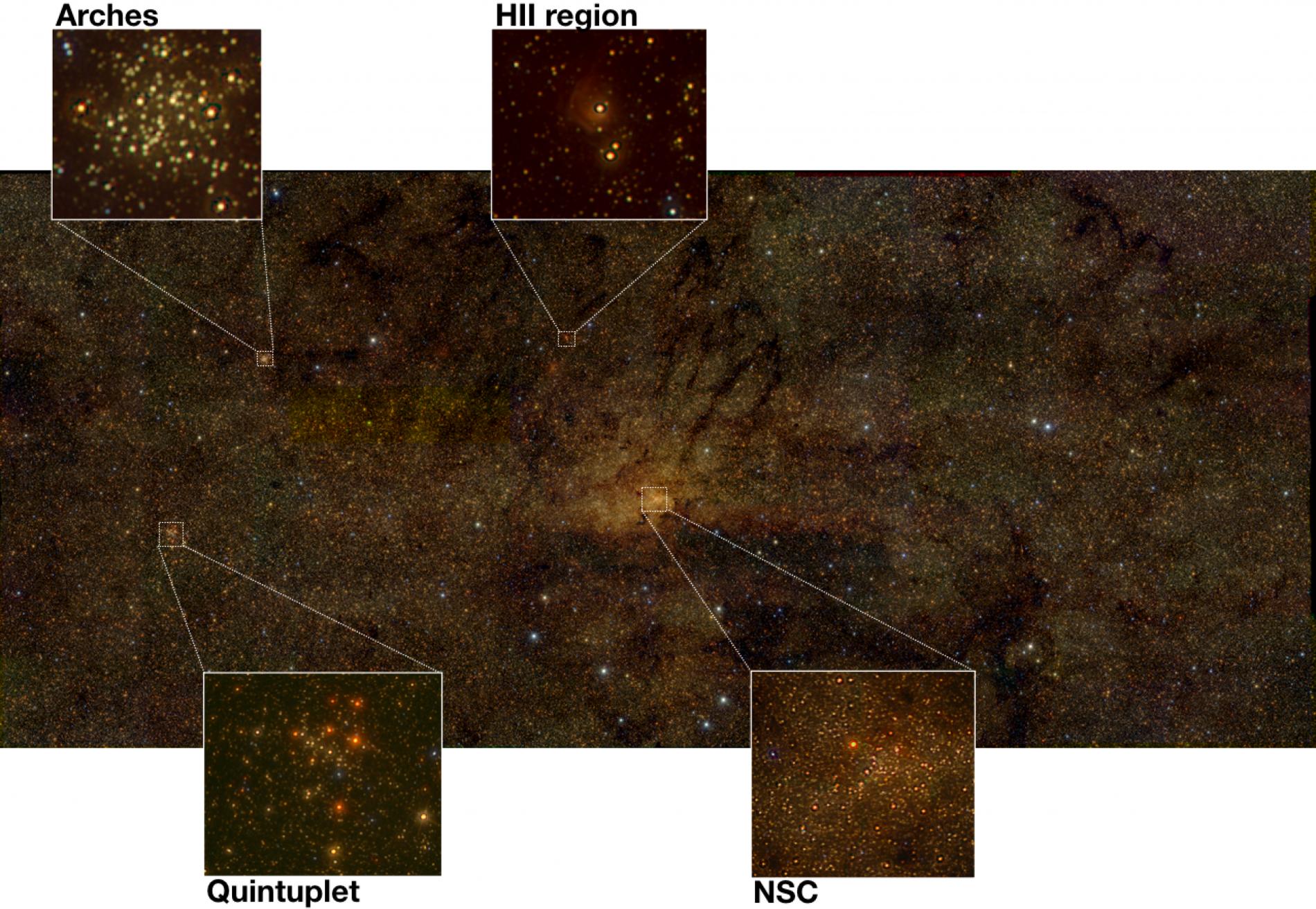IAA researchers publish the most detailed star catalogue of the Galactic Centre
The GALACTICNUCLEUS project will make it possible to study the stellar population surrounding the supermassive black hole at the Galactic Centre in unprecedented detail. The work, led by the Institute of Astrophysics of Andalusia, offers the most extensive census of stars in the Galactic Core recorded to date
The European Southern Observatory (ESO) database has just published the most extensive catalogue of stars in the Galactic Centre to date. The centre of the Milky Way is home to a supermassive black hole of about four million solar masses, Sagittarius A*, whose discovery led to the Nobel Prize in Physics in 2020. Surrounding it is an exceptionally dense star cluster, and the whole represents a region of great scientific interest, for which the GALACTICNUCLEUS project was designed to provide in-depth knowledge.
This region, with a density of stars much higher than that around our Solar System, is representative of other nearby galactic nuclei. "Its uniqueness lies in the fact that, being the closest, it can be studied in greater detail. Due to its characteristics (the central black hole, the high density of stars, the intense ultraviolet radiation, etc.) the Galactic Centre is a unique laboratory where to study, among others, phenomena such as star formation in extreme environments, or the interaction of stars with a supermassive black hole", says Rainer Schödel, astronomer at the Institute of Astrophysics of Andalusia (IAA-CSIC) and principal investigator of GALACTICNUCLEUS.

However, it is not easy to observe the Galactic Centre. The dense clouds of gas and dust between our planet and the centre of the Milky Way cause extreme reddening and extinction in the visible light emitted in the core of the Milky Way. Stars in this region can therefore only be studied in the infrared, which is less sensitive to these effects (in this case, the HAWK-I infrared camera of the European Southern Observatory's Very Large Telescope –VLT- was used).
On the other hand, the very high density of stars in this region requires images with very high angular resolution: the influence of the Earth's atmosphere produces blurred images in which it is impossible to observe individual stars, and the GALACTICNUCLEUS team has used a technique specifically developed for this project that constructs sharp images from hundreds of short exposures (of about one second).
GALACTICNUCLEUS has thus mapped this area in unprecedented detail: on the order of a hundred times more stars have been detected than with previous surveys, which will allow us to understand the star formation processes in this extreme environment and to reconstruct the history of star formation in the centre of our Galaxy.
The GALACTICNUCLEUS project has been funded by the European programme of the European Research Council (ERC), which promotes excellent science through its Consolidator Grants. The observations for the project were acquired as part of what are known as ESO Large Programmes, which require many telescope hours and can lead to a breakthrough in the field of study.
First Data Release from the GALACTICNUCLEUS Survey: https://eso.org/sci/publications/announcements/sciann17403.html
Instituto de Astrofísica de Andalucía (IAA-CSIC)
Unidad de Divulgación y Comunicación
Silbia López de Lacalle - sll[arroba]iaa.es - 958230676
https://www.iaa.csic.es
https://divulgacion.iaa.csic.es

